 Verizon Communications this morning announced it will buy AOL, Inc., in a $4.4 billion cash deal that will provide Verizon with powerful mobile video and advertising platforms.
Verizon Communications this morning announced it will buy AOL, Inc., in a $4.4 billion cash deal that will provide Verizon with powerful mobile video and advertising platforms.
Originally known for its ubiquitous dial-up Internet access, AOL today is better described as a content and advertising aggregator — putting online video in front of viewers bolstered by AOL’s powerful advertising technology that can match a targeted advertising message to a specific viewer in milliseconds.
AOL’s portfolio also includes the well-known Engadget, TechCrunch and Huffington Post websites, which many analysts expect will not be part of the deal, quickly spun off to a new owner(s) to avoid any political headaches over Verizon’s control of the well-known content sites, some including coverage critical of Verizon.
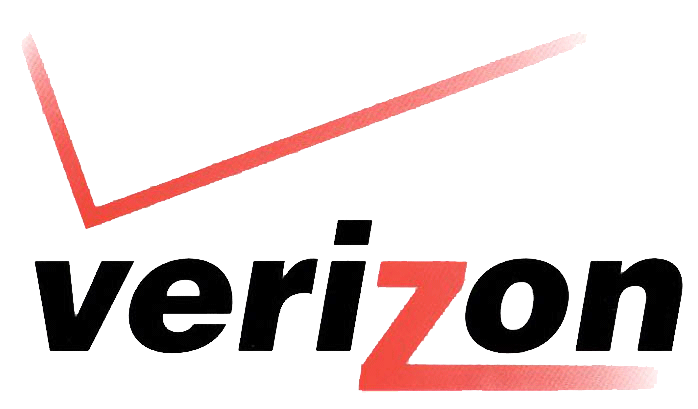 All signs point to the AOL acquisition as more evidence Verizon management is shifting priorities to its mobile business, Verizon Wireless. In 2014, Verizon acquired the assets of Intel Media, which was planning an Internet TV service called OnCue. Verizon’s acquisition will help it develop an alternative television platform and many analysts expect it will primarily reach Verizon Wireless customers.
All signs point to the AOL acquisition as more evidence Verizon management is shifting priorities to its mobile business, Verizon Wireless. In 2014, Verizon acquired the assets of Intel Media, which was planning an Internet TV service called OnCue. Verizon’s acquisition will help it develop an alternative television platform and many analysts expect it will primarily reach Verizon Wireless customers.
Complimenting online video with AOL’s ad placement and insertion platform will likely be the best chance Verizon has to monetize that video content.
“Certainly the subscription business and the content businesses are very noteworthy,” confirmed Verizon’s president of operations, John Stratton. “For us, the principal interest was around the ad tech platform.”
[flv]http://www.phillipdampier.com/video/Bloomberg Why Verizon Coveted AOLs Ad Technology and Mobile Video 5-12-15.flv[/flv]
Bloomberg says Verizon’s real interest in AOL is their online advertising platform, which can bolster Verizon Wireless’ mobile video service. (2:39)
Verizon’s $4 billion investment in AOL did not go into expanding its fiber optic platform FiOS.
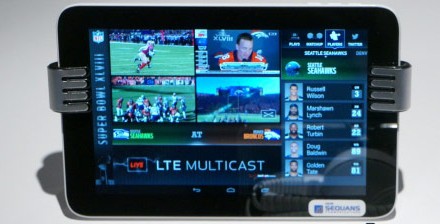
Verizon Wireless Multicast
“For the price it’s paying for AOL, Verizon could deploy its FiOS broadband service across the rest of its service area, bringing much-needed services and competition to communities like Baltimore, Boston and Buffalo,” said Free Press research director S. Derek Turner. “Instead, the company is spending a fortune to wade into the advertising and content-production markets. In terms of the latter, Verizon has already shown a willingness to block content and skew news coverage.”
As Stop the Cap! reported last week, that isn’t a surprise to some utility companies that believe all signs point to Verizon’s growing disinterest in its wireline division. Florida Power & Light expects Verizon will become a wireless only company within the next 10 years.
While AT&T explores expanding its wireless service internationally and seeks approval for its acquisition of satellite service DirecTV, Verizon Wireless is moving to monetize increased customer usage of its network with the forthcoming introduction of a video service this summer. The product would offer a mix of ad-supported and paid short video content and may offer live multicast programming that can reach a larger audience without disrupting network capacity.
Increased viewing of high bandwidth video will force Verizon customers to continually upgrade data plans, further monetizing Verizon’s wireless business. AOL’s ad insertion technology will allow Verizon to earn advertising income from viewers, creating a dual revenue stream.
Verizon can also sell advertisers information about its massive customer base of wired and wireless customers, including their browsing habits and demographic profile to deliver “data-driven marketing and addressable advertising.”
[flv]http://www.phillipdampier.com/video/Bloomberg Verizon-AOL Deal 1999 All Over Again 5-12-15.flv[/flv]
Bloomberg News puts together several of Verizon’s puzzling recent acquisitions, which point to a shift of Verizon’s business towards its mobile and content platforms. (5:42)


 Subscribe
Subscribe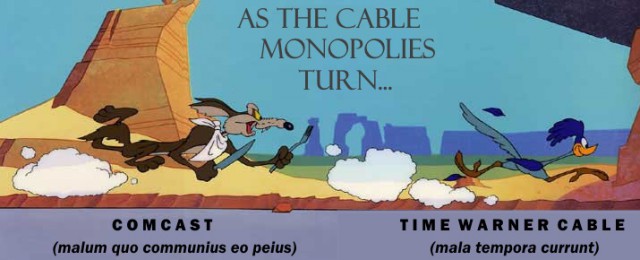
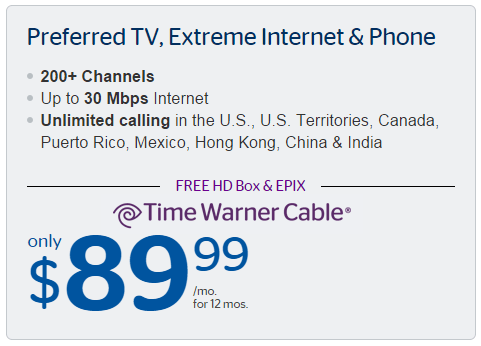
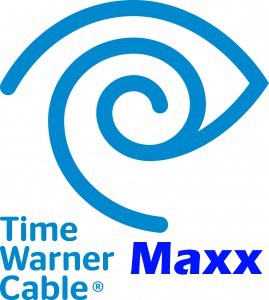

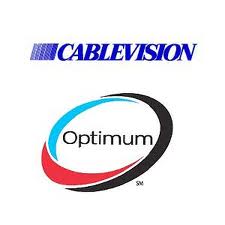 The deal covers the service’s entire catalog of on-demand television shows and movies and will be available to Cablevision broadband customers online and possibly through set-top boxes for traditional cable television customers.
The deal covers the service’s entire catalog of on-demand television shows and movies and will be available to Cablevision broadband customers online and possibly through set-top boxes for traditional cable television customers.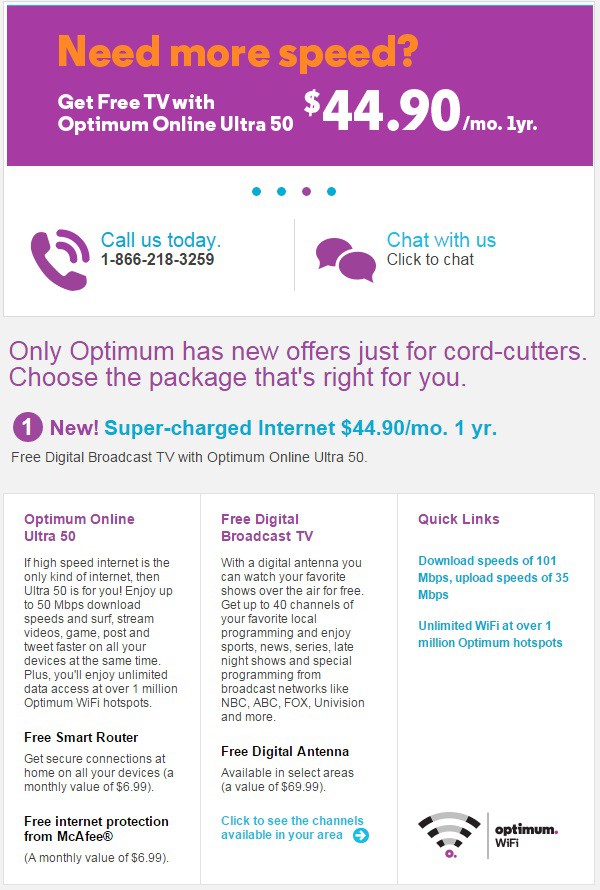
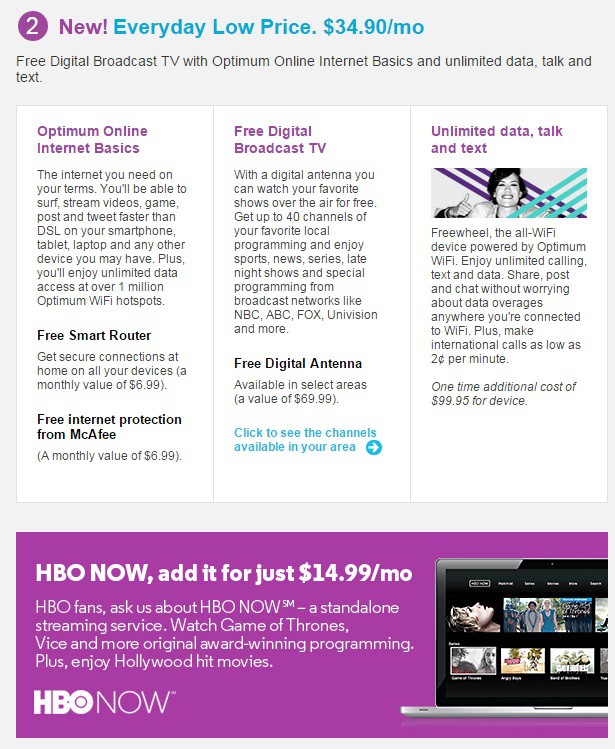
 The largest telecom companies in the United States, their trade associations, and Ajit Pai, one of two Republican commissioners serving at the Federal Communications Commission routinely claim America has the best broadband in the world. From the perspective of providers running to their respective banks to deposit your monthly payment, they might be right. But on virtually every other metric, the United States has some of the most expensive broadband in the world at speeds that would be a gouging embarrassment in other countries.
The largest telecom companies in the United States, their trade associations, and Ajit Pai, one of two Republican commissioners serving at the Federal Communications Commission routinely claim America has the best broadband in the world. From the perspective of providers running to their respective banks to deposit your monthly payment, they might be right. But on virtually every other metric, the United States has some of the most expensive broadband in the world at speeds that would be a gouging embarrassment in other countries.
 The Slovak government insisted that telecommunications networks in the country be competitive and it maintains oversight to make sure monopolies do not develop. It rejected claims that total deregulation and competition alone would spur investment. Slovakia welcomes outside investment, but also makes certain monopoly pricing power cannot develop. As a result, most residents of Bratislava have a choice of up to eight different broadband providers — a mix of cable, telephone, wireless, and satellite providers that all fiercely compete in the consumer and business markets.
The Slovak government insisted that telecommunications networks in the country be competitive and it maintains oversight to make sure monopolies do not develop. It rejected claims that total deregulation and competition alone would spur investment. Slovakia welcomes outside investment, but also makes certain monopoly pricing power cannot develop. As a result, most residents of Bratislava have a choice of up to eight different broadband providers — a mix of cable, telephone, wireless, and satellite providers that all fiercely compete in the consumer and business markets. Prices are considerably lower than what American providers charge, although speeds remain somewhat lower than broadband services in Bulgaria, Romania, and the Baltic States. At one address on Kláštorská, a street of modest single family homes (some in disrepair), these companies were ready to install service:
Prices are considerably lower than what American providers charge, although speeds remain somewhat lower than broadband services in Bulgaria, Romania, and the Baltic States. At one address on Kláštorská, a street of modest single family homes (some in disrepair), these companies were ready to install service: A week after its deal with Comcast collapsed, Time Warner Cable may be in the buying mood.
A week after its deal with Comcast collapsed, Time Warner Cable may be in the buying mood.